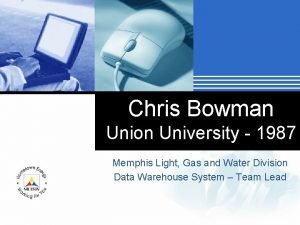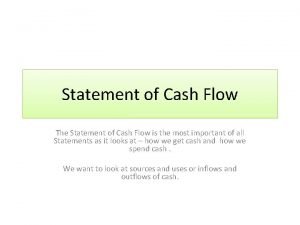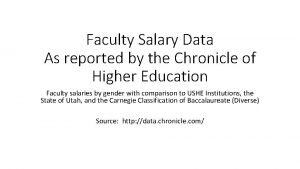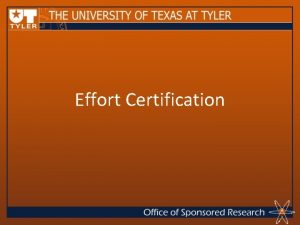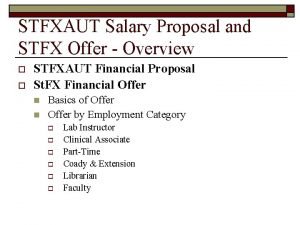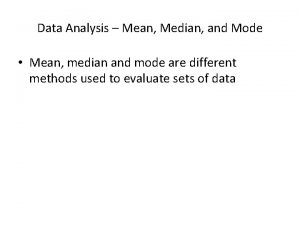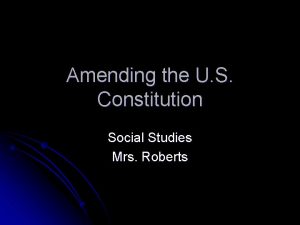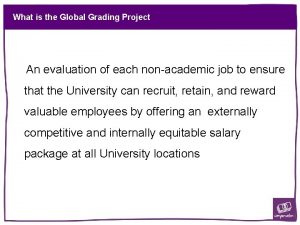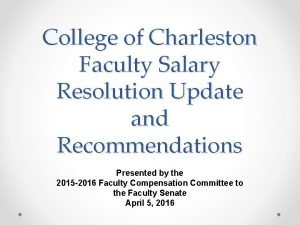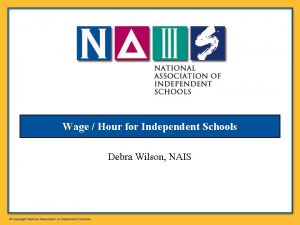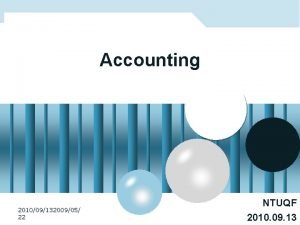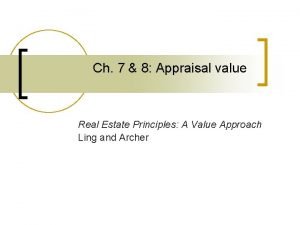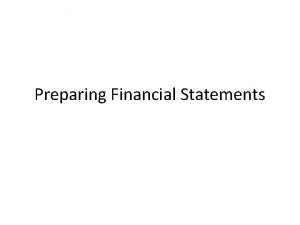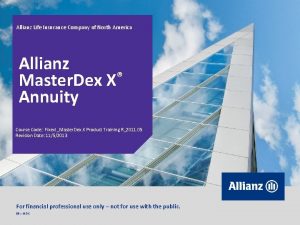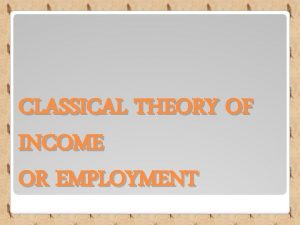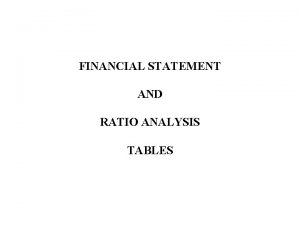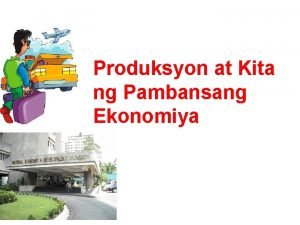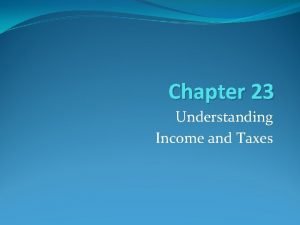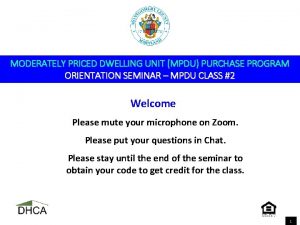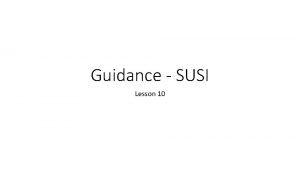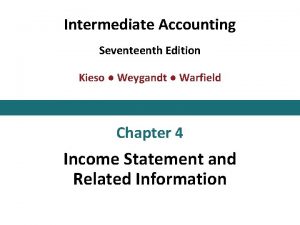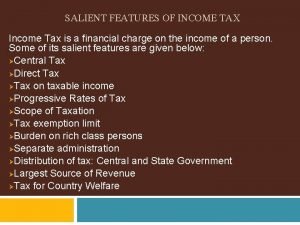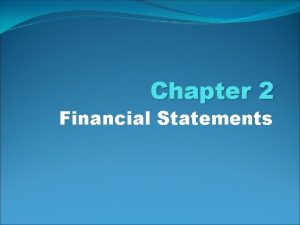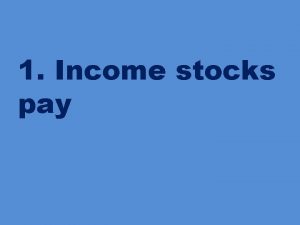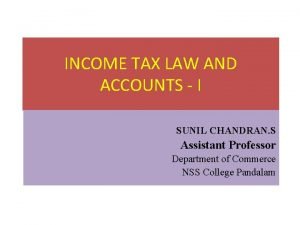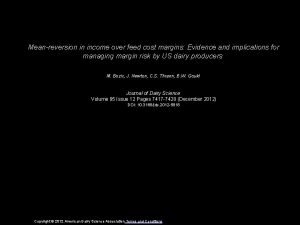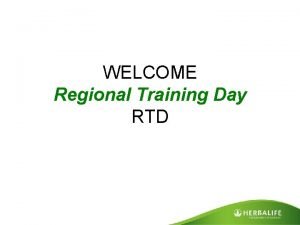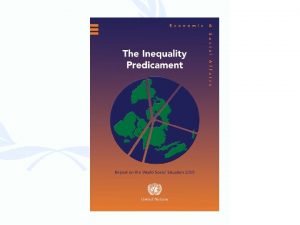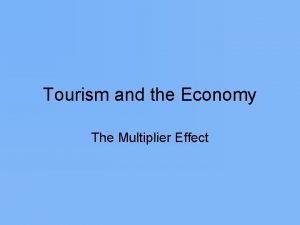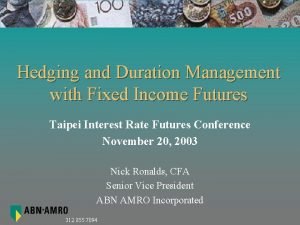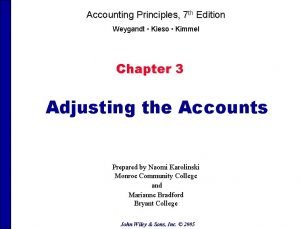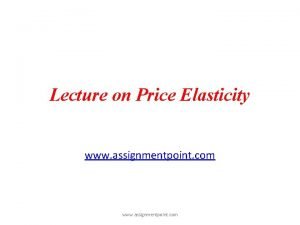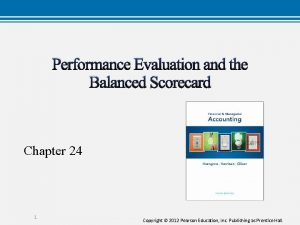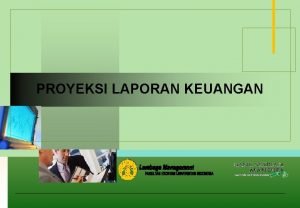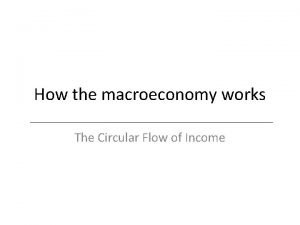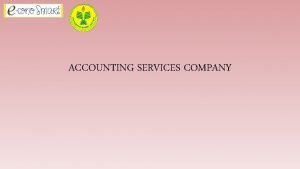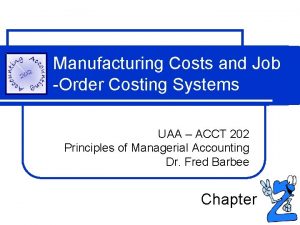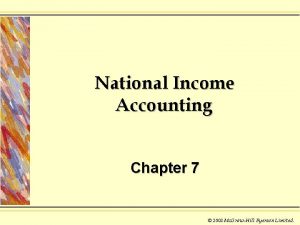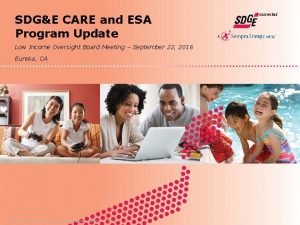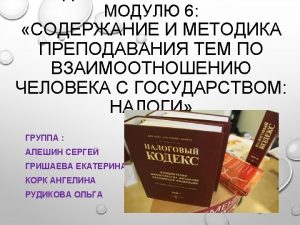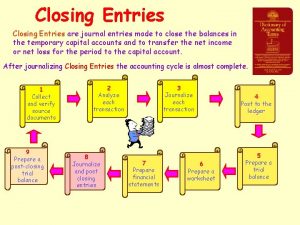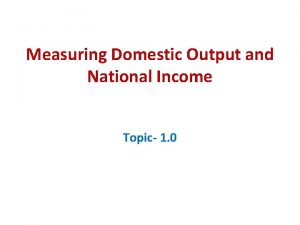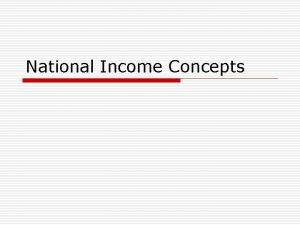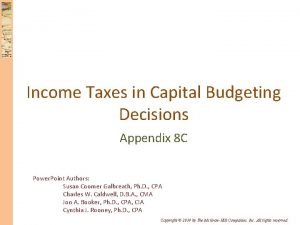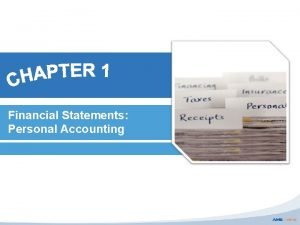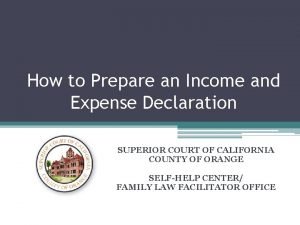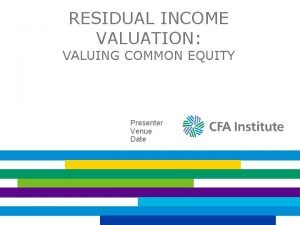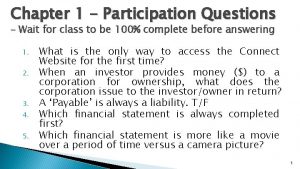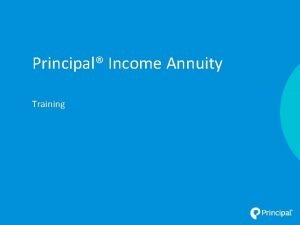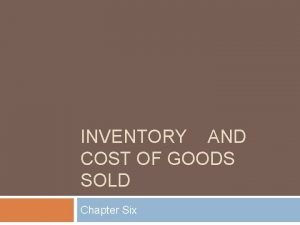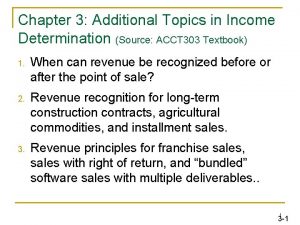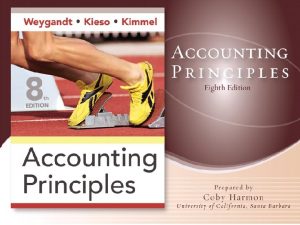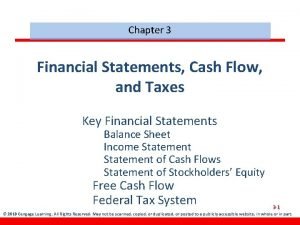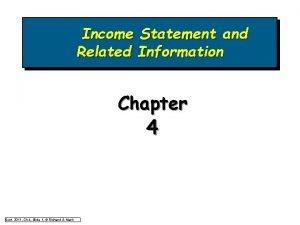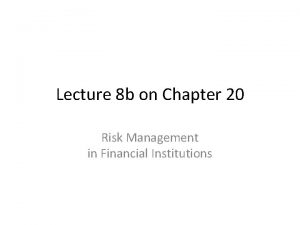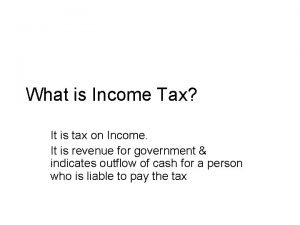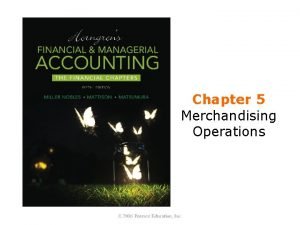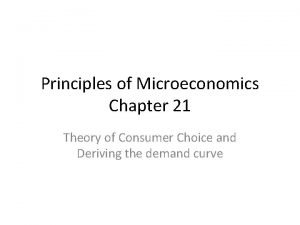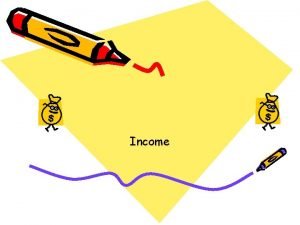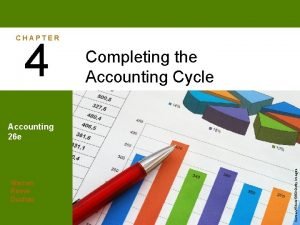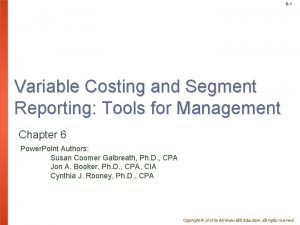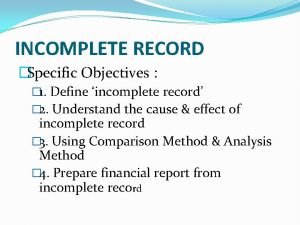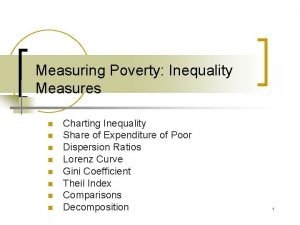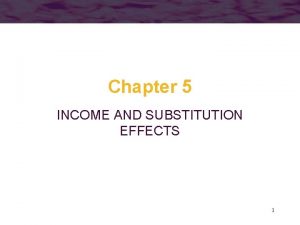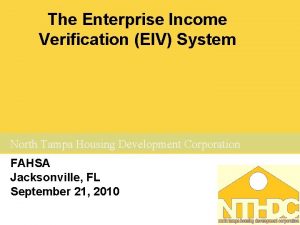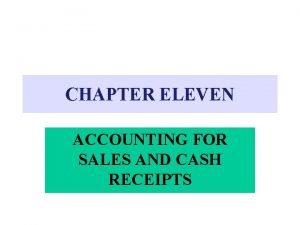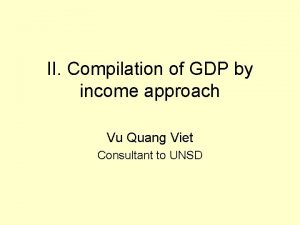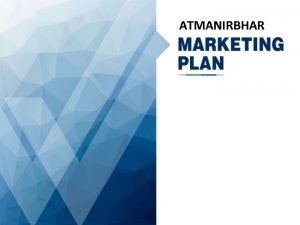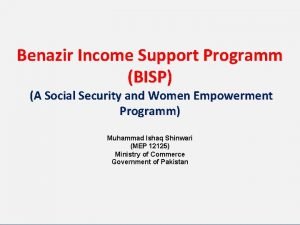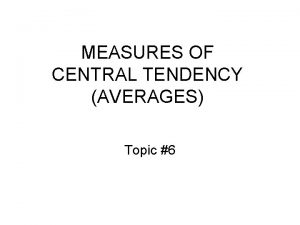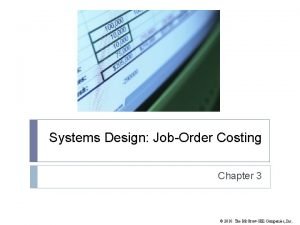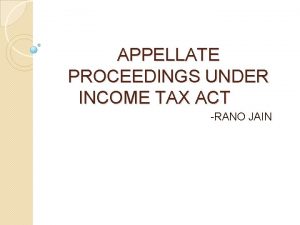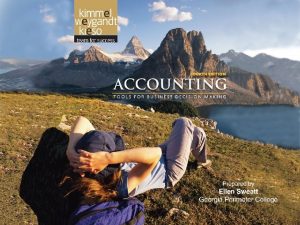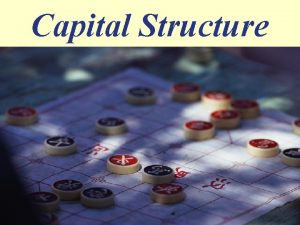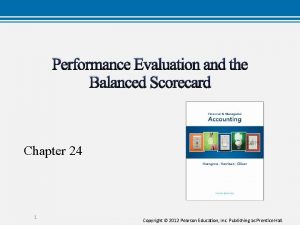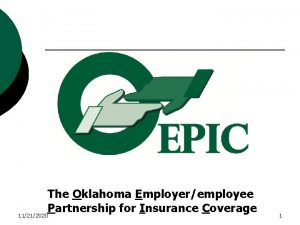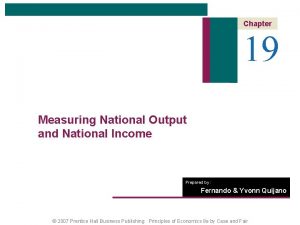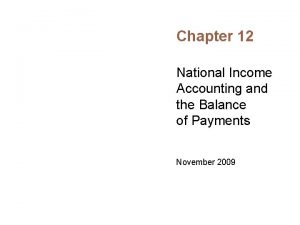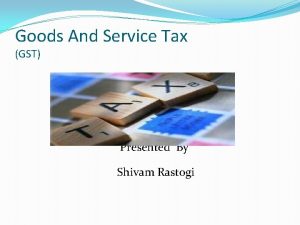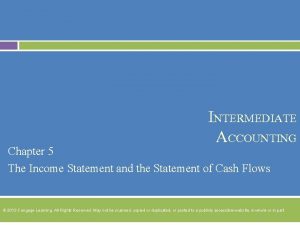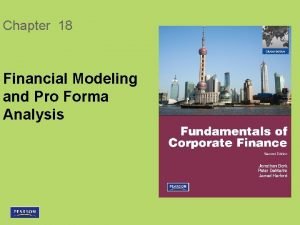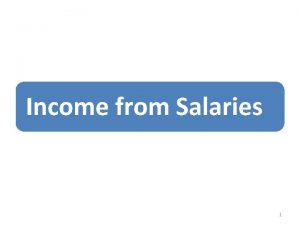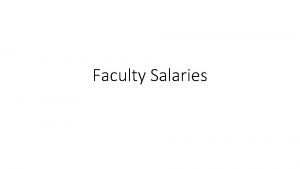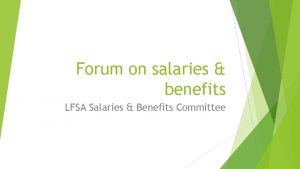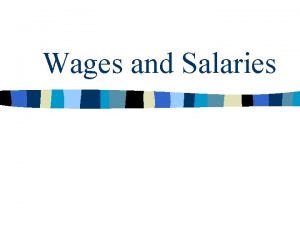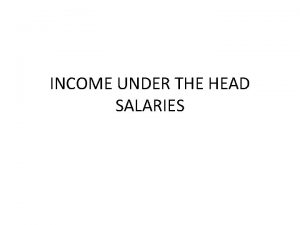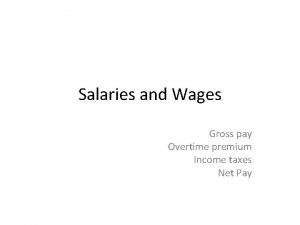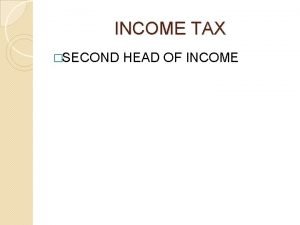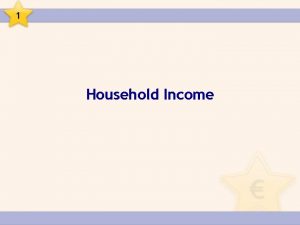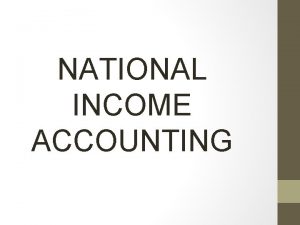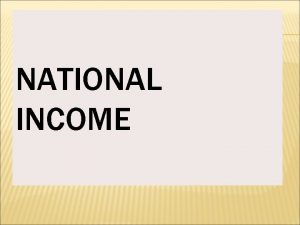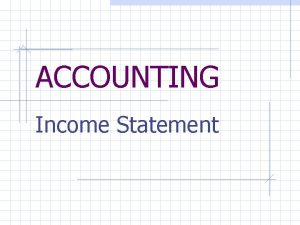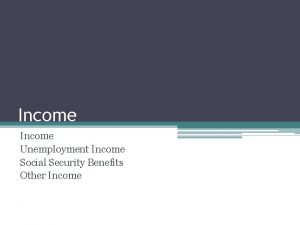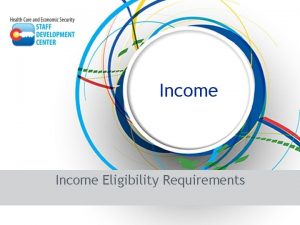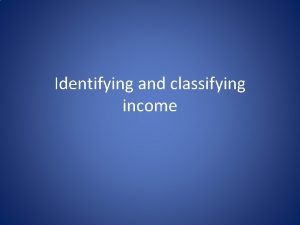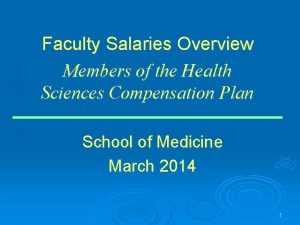Presentation on INCOME FROM SALARIES INCOME FROM SALARIES






















![Allowances [Section 17(3)] • A sum of money paid regularly to a person to Allowances [Section 17(3)] • A sum of money paid regularly to a person to](https://slidetodoc.com/presentation_image_h2/d4770cef7b6838a8b86d84f9f9a4cdaf/image-23.jpg)













![PERQUISITES [Section 17(2)] In the income- tax act, 1965 " perquisite" includes. I. the PERQUISITES [Section 17(2)] In the income- tax act, 1965 " perquisite" includes. I. the](https://slidetodoc.com/presentation_image_h2/d4770cef7b6838a8b86d84f9f9a4cdaf/image-37.jpg)









![A-18 Transfer of a moveable asset [computer, car or electronic items] without consideration to A-18 Transfer of a moveable asset [computer, car or electronic items] without consideration to](https://slidetodoc.com/presentation_image_h2/d4770cef7b6838a8b86d84f9f9a4cdaf/image-47.jpg)


![B-1. RENT FREE HOUSE [Section 17 (2)(i)] • MEANING OF SALARY: Salary includesi. Basic B-1. RENT FREE HOUSE [Section 17 (2)(i)] • MEANING OF SALARY: Salary includesi. Basic](https://slidetodoc.com/presentation_image_h2/d4770cef7b6838a8b86d84f9f9a4cdaf/image-50.jpg)




![B-2. CONCESSIONAL ACCOMODATION [Section 17 (2)(ii)] Value of rent free accommodation (-) Rent paid B-2. CONCESSIONAL ACCOMODATION [Section 17 (2)(ii)] Value of rent free accommodation (-) Rent paid](https://slidetodoc.com/presentation_image_h2/d4770cef7b6838a8b86d84f9f9a4cdaf/image-55.jpg)
![B-3. Obligation of employee met by employer [section 17(2)(iv)] These expenses are issued on B-3. Obligation of employee met by employer [section 17(2)(iv)] These expenses are issued on](https://slidetodoc.com/presentation_image_h2/d4770cef7b6838a8b86d84f9f9a4cdaf/image-56.jpg)


![B-6. CONTRIBUTION TO AN APPROVED SUPERANNUATION FUND BY THE EMPLOYER[Section 17 (2) (vii) ] B-6. CONTRIBUTION TO AN APPROVED SUPERANNUATION FUND BY THE EMPLOYER[Section 17 (2) (vii) ]](https://slidetodoc.com/presentation_image_h2/d4770cef7b6838a8b86d84f9f9a4cdaf/image-59.jpg)









![C-i. Valuation of perquisite of motor car or any other automatic conveyance [rule 3(2)] C-i. Valuation of perquisite of motor car or any other automatic conveyance [rule 3(2)]](https://slidetodoc.com/presentation_image_h2/d4770cef7b6838a8b86d84f9f9a4cdaf/image-69.jpg)



![C-ii. Perquisite of free domestic servants [rule 3(3)] • In case employer has provided C-ii. Perquisite of free domestic servants [rule 3(3)] • In case employer has provided](https://slidetodoc.com/presentation_image_h2/d4770cef7b6838a8b86d84f9f9a4cdaf/image-73.jpg)


![C-IV. FREE EDUCATIONAL FACILITIES TO CHILDREN OF EMPLOYEE’S HOUSEHOLD[RULE 3(5)] 1. PAYMENT OR REIMBURSEMENT C-IV. FREE EDUCATIONAL FACILITIES TO CHILDREN OF EMPLOYEE’S HOUSEHOLD[RULE 3(5)] 1. PAYMENT OR REIMBURSEMENT](https://slidetodoc.com/presentation_image_h2/d4770cef7b6838a8b86d84f9f9a4cdaf/image-76.jpg)


![PROFITS IN LIEU OF SALARY [17(3)] Following types of receipts are treated as profits PROFITS IN LIEU OF SALARY [17(3)] Following types of receipts are treated as profits](https://slidetodoc.com/presentation_image_h2/d4770cef7b6838a8b86d84f9f9a4cdaf/image-79.jpg)

![PAYMENT EXEMPTED U/S 10 : 1. LEAVE TRAVEL CONCESSION / ASSISTANCE [SECTION 10(5)] Through PAYMENT EXEMPTED U/S 10 : 1. LEAVE TRAVEL CONCESSION / ASSISTANCE [SECTION 10(5)] Through](https://slidetodoc.com/presentation_image_h2/d4770cef7b6838a8b86d84f9f9a4cdaf/image-81.jpg)






![5. ANY AMOUNT RECEIVED AS COMPENSATION ON TERMINATION OF EMPLOYMENT [SECTION 10 B] Such 5. ANY AMOUNT RECEIVED AS COMPENSATION ON TERMINATION OF EMPLOYMENT [SECTION 10 B] Such](https://slidetodoc.com/presentation_image_h2/d4770cef7b6838a8b86d84f9f9a4cdaf/image-88.jpg)
![6. VOLUNTARY RETIREMENT COMPENSATION [SECTION 10(10 C)] • Compensation received at the time of 6. VOLUNTARY RETIREMENT COMPENSATION [SECTION 10(10 C)] • Compensation received at the time of](https://slidetodoc.com/presentation_image_h2/d4770cef7b6838a8b86d84f9f9a4cdaf/image-89.jpg)
![7. INCOME BY WAY OF TAX ON PERKS [SECTION 10 (10 CC)] In case 7. INCOME BY WAY OF TAX ON PERKS [SECTION 10 (10 CC)] In case](https://slidetodoc.com/presentation_image_h2/d4770cef7b6838a8b86d84f9f9a4cdaf/image-90.jpg)
![10. ANY PAYMENT FROM SUPERANNUATION FUND [SECTION 10(13)] Any payment from superannuation fund i. 10. ANY PAYMENT FROM SUPERANNUATION FUND [SECTION 10(13)] Any payment from superannuation fund i.](https://slidetodoc.com/presentation_image_h2/d4770cef7b6838a8b86d84f9f9a4cdaf/image-91.jpg)
![DEDUCTION OUT OF GROSS SALARY [SECTION 16] 1. Entertainment Allowance to Government Employees u/s DEDUCTION OUT OF GROSS SALARY [SECTION 16] 1. Entertainment Allowance to Government Employees u/s](https://slidetodoc.com/presentation_image_h2/d4770cef7b6838a8b86d84f9f9a4cdaf/image-92.jpg)
















- Slides: 108

Presentation on INCOME FROM SALARIES

INCOME FROM SALARIES HEAD SALARIES DEFINED Under section 15, the following incomes are chargeable to incometax under the head salaries: 1. Any salary due from an employer or a former employer to an assesse in the previous year whether paid or not; 2. Any salary paid or allowed to him in the previous year by or on behalf of an employer or a former employer though not due or before becomes due to him; 3. Any arrears of salary paid or allowed to him in the previous year by or on behalf of an employer or a former employer if not charged to income-tax for any earlier previous year.

Characteristics of Salary • Relationship of employer and employee: For a payment to fall under the head salaries the relationship of employer and employee must exist between payee and the receiver of the salary. Every kind of payment to every kind of servant, public or private, however high or low placed he may be, is covered under the provisions of this act. • Salary from more than one employer: Any amount of salary received or due from one or more than one employer shall be taxable under this head. Such situation may arise when an employee is working with two employers simultaneously or has worked with one employer and later on serves with another employer after leaving service with the first employer, salary from both the employers shall be taxable under this head. • Salary from present, past or prospective employer: Salary received or due from present, past or future employer is also taxable under this head. • Tax free salary Sometimes, the employer allows an employee to draw tax-free salary, e. g. the employer pays full salary to the employee and also pays tax on this directly to the department. The employee’s assessment is to be made not on the amount of salary he is drawing but on gross amount i. e. salary drawn plus the tax paid by the employer.

• Salary received as member of parliament or member of state legislature A member of parliament or of state legislature is not treated as an employee of the govt. and hence, salary received by such persons is not taxable under the head salaries. It is taxable as income from other sources. Any allowance received by them is fully exempted from tax. • Receipts from persons other than employer Perquisites or benefits or any other remuneration received fro persons other than the employer, would be taxable not under the head salaries but under the head income fro other sources even if they accrue to the employee by reason of his employment or while he was discharging his normal duties. • Place of accrual of salary income Salary accrues at that place where the services are rendered. • Salary or pension received by UNO employees: It is fully exempted as per circular no. 293 Dt. 10 -2 -81. • Salary received by a teacher/researcher from a SAARC member State : Exempted up to 2 years.

• Deductions made by the employer: If , an employer makes certain deductions out of the salary payable to an employee, amount so deducted is deemed to be received by the employee. Some important types of deductions made by the employer are as follows: 1. Deductions made to recover the loan advanced by the employer. 2. Employees‘ contribution towards the provident fund, income-tax and professional tax. 3. Deduction made to pay the premium on life insurance policy of the employee. 4. Any other deduction for which the employee has authorized the employer. • Salary as partner: Any salary, commission or remuneration received by a working partner from a firm/LLP shall not be taxable under the head salaries. It is taxable under the head profits and gains. • Payments received by Legal Heirs of a Deceased employee: Any ex-gratia payment or compensation given to widow or legal heirs of an employee who dies during service is not taxable as salary income but family pension received is taxable under other sources.

• PAYMENTS RECEIVED BY LEGAL HEIRS OF A DECEASED EMPLOYEE Any ex-gratia payment or compensation given to widow or legal heirs of an employee who dies during the service is not taxable as salary income. • PAYMENT MADE AFTER CESSATION OF EMPLOYMENT It is also taxable under the head salaries. • VOLUNTARY FOREGOING: APPLICATION OF SALARY § Salary is chargeable on due basis. § It will become income only after it has fallen due. § Therefore , voluntary surrender or forgoing of salary after it has become due will be mere application of income and hence taxable. . • PREVIOUS YEAR FOR SALARIES The previous year for the income under the head salaries shall always be financial year of the Government of India i. e. April to March. • TAXABILITY OF SALARY ON DUE OR RECEIPT , WHICHEVER IS EARLIER BASIS U/s 15(a) salary is taxable on due basis whether received or not. Salary becomes due after doing work in India is is due on monthly basis. First salary for the month of April becomes due on 1 st day of next month. In some cases salary becomes due on the last day of the month and the salary for the month of April shall be due on 30 th April.

• SALARY GRADE/PAY SCALE In some organisations like Government offices , banks , post offices , railways, etc. salary to employees is paid as per pay scales. the pay scale fixes the starting salary of an employee and also the annual increment in future years of the employment. The annual increment is granted to employee after completion of one full year of service e. g. If an employee joins his service on 1 st September 2011, he will be granted 1 st annual increment i. e. . 1 st September 2012. EXAMPLE OF GRADE /PAY SCALE 8000 -300 -11000 12000 -500 -20000 • ADVANCE SALARY RECEIVED In case an assessee receives some salary in advance in a previous year which was actually not due in that year, it shall be taxable in the year of receipt. In case , any loan or advance is taken it is not treated as advance salary. • ARREARS OF SALARY RECEIVED Any amount of salary received from present or past employer during relevant previous tear and which relates to some earlier previous years , is treated as arrears of salary. It is taxable in the year in which received and not the year to which it belongs.

• SALARY IN LIEU OF NOTICE To terminate the services of an employee it is essential to serve a notice as per service agreement. In case it is desired to relive the employee immediately , he is given salary in lieu of such notice period. • NO RELEVANCE OF METHOD OF ACCOUNTING Salary is to be computed on due or receipt , whichever is earlier. Salaried individual is not required to adopt any method of accounting for computation of his salary.

COMPUTATION OF SALARY INCOME : Salary income of an employee is to be computed in accordance with the provisions laid down in sections 15, 16 and 17. Section 15, as discussed earlier gives the scope of this head and tells us that which incomes shall form part of this head. Section 16 gives deductions to be allowed out of incomes taxable under this head. Section 17(1) defines the word ‘salary’ as mentioned in section 15. Section 17(2) and 17(3) further define the terms ‘Perquisites’ and “profits in lieu of salary

form of chart given below :

SALARY includes…. Sec. 17(1) • Wages; • Annuity or pension; • Gratuity; • Fees, Commission, perquisites or profits in lieu of salary; • Any advance salary; • Leave salary; • Annual accretion; and • Transferred balance TAX TREATMENT OF DIFFERENT KINDS OF SALARIES 1. Basic Salary or Wages: Both salary and wages mean a payment of work done, or service rendered. Ordinarily salary paid in respect of non-manual work and wages for manual work. 2. Fees and Commission from Employer for doing any Extra Work: These items are taxable as salary income. 3. Leave Salary: Leave salary received before retirement is taxable as salary income. 4. Pension: Pension received by assessee during the P. Y. is taxable as salary income. 5. Bonus: Bonus paid by employer to employee is taxable on receipt basis as salary income

PROVIDENT FUNDS To encourage savings for the social security of employees, the government has set up various kinds of provident funds. The employee contributes a fixed percentage of his salary towards these funds and in many cases employer also contributes. The whole contribution with interest is credited to employee’s account and on retirement he gets payment out of this fund. If employee dies his heirs get the payment. Provident funds are of four types: - § § Statutory provident fund Recognized Provident fund Unrecognized Provident fund Public Provident Fund

STATUTORY PROVIDENT FUND Statutory provident fund is set up under the provisions of the Provident Funds Act, 1925 to encourage savings among government employees. This fund is maintained by Government and Semi. Government organizations, local authorities, railways, universities and recognized educational institutions. • The employer’s contribution towards S. P. F and interest credited on the accumulated balance are not to be included in the income of the employee and so it is ignored. • When the employee retires or leaves the service, any amount received from the provident fund is not included in employees total income, being exempted income. • Employee’s own contribution will qualify for deduction u/s 80 C.

RECOGNISED PROVIDENT FUND Recognized Provident fund is one which is recognized by the commissioner of income-tax under the Income Tax Act. This fund is maintained by industrial undertakings, business houses, banks etc. • Employer’s contribution in excess of 12% of the employee’s salary is included employees salary for tax purposes. • Employee’s own contribution towards this fund will qualify for deduction u/s 80 C • Interest on accumulated balance of R. P. F in excess of 9. 5% is included in salary income of employee of that previous year.

UNRECOGNIZED PROVIDENT FUND Unrecognized Provident fund is the one which is not recognized by the commissioner of income-tax under the Income Tax Act. The employee and employer both contributes to this fund. • Employees contribution to this fund is included in his salary income and he will not be allowed any deduction u/s 80 C. • Employers contribution and interest on accumulate credit balance of the fund is not included in his employee’s salary income. • Interest on the employee’s own contribution will be taxable as ‘Income From Other Sources. ’ A payment received out of this fund is taxable so far it represents employer’s contribution and interest thereon.

PUBLIC PROVIDENT FUND On July 1, 1968 a new fund known as public provident fund was started so that self employed people (Doctors, Lawyers, Accountants, Actors, Traders, Pensioners) could also enjoy the benefit of deduction u/s 80 C. The interested people can open their account with State Bank of India and its subsidiaries. The subscription can be between Rs. 500 and Rs. 1, 50, 000 in a year. In one month only one deposit is possible and at one time one can deposit in multiples of 50 only. Full withdrawal is allowed after 15 years but in case of death of subscriber, full repayment will be made to the legal heir or nominee. Partial withdrawal and loans are also possible. Interest credited in this account is fully exempted. Balances in this account are not liable to attachment by any court.

Taxable portion of annual accretion to RPF Taxable annual accretion is defines as“That portion of annual accretion in any previous year to the balance at the credit of recognized provided fund as consists of: • Contribution made by employer in excess of 12% of employee’s salary. • Interest credited on the balance to the credit of the employee so far as it exceeds 9. 5%, shall be included in the salary income for that previous year and shall be liable to tax. The above mentioned rule makes it clear that any contribution by employer in excess of 12% of employee’s salary is to be added in salary.

TRANSFERRED BALANCE The balance of unrecognised provident fund, which is transferred to recognised provident fund is called transferred balance. According to Schedule IV, rule 11 (4), the amount of taxable portion will be calculated as under: • The fund will be treated as R. P. F from the date of its institution • The employer’s contribution to U. R. P. F shall qualify for exemption upto 12% of salary and excess shall be taxable. • The interest credited to accumulated balance shall be exempted if rate of interest is upto 9. 5% and excess shall be taxable. • The taxable amount shall be deemed to be income in the year fund gets recognition. The remainder of transferred balance shall be ignored.

REFUND FROM PROVIDENT FUND ØIf Statutory Provident Fund : Any refund received from the Statutory Provident Fund is fully exempted. ØIf Unrecognised Provident Fund: Taxable portion (i. e. employer’s contribution and interest on employer’s contribution) is added in salary income of the employee. Interest on employee’s contribution is taxable under head “Income From Other Sources. ”

Ø Amount withdrawn or refunded from credit balance of Recognised Provident Fund: Any lump sum amount received or refund taken from accumulated credit balance of recognised provident fund shall be fully exempted subject to conditions as mentioned in rule 8 of part A The conditions when exemption is allowed : • In case employee is taking the refund after putting continuous service for 5 years or more. • In case employee has not completed 5 years of service but is taking the refund as his service has been terminated due to ill health, discontinuance of employer’s business ( i. e. a reason beyond employee’s control). It means that the employee is not leaving out of his sweet will. • In case employee got job with a new employer and his provident fund account was transferred to new employer and total service with both the employers is 5 years or more.

New Pension System The NPS is a new contributory pension scheme introduced by the Central Government for its own new employees. Under the new pension system, each new central government employee will open a personal retirement account on joining service. Every month, and till the employee retires or leaves government service, a part of the employee's salary will be transferred into this account. When the person retires, he will be able to use these savings to take care of the needs and expenses of his family during old age. Contribution Employee is required to contribute 10% of his monthly salary towards notified pension account. It is mandatory for the employer also to contribute 10% of employee’s salary towards this account.

Deductions : Contribution made by employer- employee is allowed a deduction u/s 80 CCD(2) out of gross total income but this deduction is allowed only up to 10% of employee’s salary. Contribution made by employee- Employee is allowed a deduction u/s 80 CCD(1) out of gross total income but this deduction is allowed only up to 10% of employee’s salary. Overall limit is 1, 50, 000 u/s 80 C, 80 CCC and 80 CCD(1). From assessment year 2016 -17 Employee can contribute additional amount up to 50, 000 p. a. towards NPS. It shall be allowed as deduction u/s 80 CCD(1 B) Pension received out of this fund by employee or his nominee It shall be fully taxable in the year of receipt.
![Allowances Section 173 A sum of money paid regularly to a person to Allowances [Section 17(3)] • A sum of money paid regularly to a person to](https://slidetodoc.com/presentation_image_h2/d4770cef7b6838a8b86d84f9f9a4cdaf/image-23.jpg)
Allowances [Section 17(3)] • A sum of money paid regularly to a person to meet needs or expenses. As such allowances are given in cash along with salary by the employer. • These allowances are given to an employee to meet some specific type of loss or expenditure of the employee or to help him to meet certain type of expenses. These are divided into three categories on the basis of their tax treatment Fully Exempted Fully Taxable Partially Taxable

(A) Fully Exempted Allowances 1. Foreign allowance only in case of government employees posted outside India. 2. House rent allowance 3. House rent allowance given to judges of high court and supreme court 4. Sumptuary allowance given to judges of high court and supreme court 5. Allowance from U. N. O 6. Allowance to teacher or professor from SAARC member states 7. Allowance to member of union public service commission

1. Foreign Allowance given by Govt. to its employees posted abroad. 2. House Rent allowance given to Judges of High Court and Supreme Court. 3. Sumptuary allowance given to Judges of High Court and Supreme Court.

(B) Fully Taxable Allowances 1. Dearness Allowance 2. City Compensatory 3. Capital Compensatory Allowance 4. Lunch Allowance 5. Tiffin Allowance 6. Marriage Allowance 7. Family Allowance 8. Deputation Allowance 9. Warden ship Allowance 10. Non Practicing Allowance 11. Project Allowance 12. Overtime Allowance 13. Fixed Medical Allowance 14. Servant Allowance 15. Entertainment Allowance for non- government employees 16. Water and Electricity Allowance 17. Holiday trip Allowance

1. Dearness Allowances - As is clear by its name, this allowance is paid to compensate the employee against the rise in price level in the economy. Although it is a compensatory allowance against high prices, the whole of it is taxable. 2. City Compensatory Allowance - This allowance is paid to employees who are posted in big cities. The purpose is to compensate the high cost of living in cities like Delhi, Mumbai etc. However, it is fully taxable. 3. Lunch/ Tiffin Allowance - It is fully taxable. It is given to employees for lunch as coupons or added as part of salary.

4. Entertainment Allowance

(C) Partially Taxable Allowances 1. House Rent Allowance 2. Entertainment Allowance for Govt. employees 3. Allowances covered u/s 10(14)(i) i. Helper Allowance ii. Uniform Allowance iii. Academic Allowance iv. Conveyance Allowance v. Travelling Allowance vi. Daily Allowance

4. Allowances covered u/s 10(14)(ii) i. Any special allowance in the nature of Composite Hill compensatory Allowance or High Altitude Allowance or Uncongenial Climate Allowance or Snow Bound Area Allowance ii. Any special Compensatory Allowance in the nature of border area or remote area or difficult area or disbursed area Allowance iii. iv. v. viii. ix. x. Transport Allowance Tribal Area Allowance Running Allowance given to employees of transport sector Children Education allowance Hostel Expenditure Allowance Compensatory Field Area Allowance Compensatory Modified Field Area Allowance Special Allowance in the nature of counter insurgency allowance given to the members of armed forces operating in areas away from their permanent locations for a period of more than 30 days.

1. House Rent Allowance An allowance granted to a person by his employer to meet expenditure incurred on payment of rent in respect of residential accommodation occupied by him is exempt from tax to the extent of least of the following three amounts: a) House Rent Allowance actually received by the assessee b) Excess of rent paid by the assessee over 10% of salary due to him c) An amount equal to 50% of salary due to assessee (If accommodation is situated in Mumbai, Kolkata, Delhi, Chennai)/ An amount equal to 40% of salary due to assessee, if accommodation is situated at any other place. ) If an employee is living in his own house and receiving HRA, it will be fully taxable. Salary = Basic + DA(enters)/DP + Commission on turnover

2. Allowances covered u/s 10(14)(i) i. e. , Official Allowances • Helper Allowance. It is exempted upto actual amount spent on engaging a helper required to perform the official duties. • Uniform Allowance. It is also exempted upto actual expenditure incurred on acquiring or maintaining of the official uniform. Excess, if any, will be taxable. • Academic Research Allowance. It is exempted upto actual expenditure incurred for research. Excess, if any, is taxable. • Conveyance Allowance. It is exempted upto actual expenditure incurred in performance of official duties. In case amount received is more than actual expenditure, excess, if any, will be taxable. • Travelling, Transfer or Daily Allowance. It is exempted upto actual expenditure incurred for the purposes of employment. Excess, if any, will be taxable. So, exemption shall be the least of following two amounts— 1. The amount of the allowance received. 2. The amount actually spent by the employee for the purpose for which the allowance is given.

Allowances exempt under Section 10 (14)(ii) This category of allowances is exempt to the extent of the amount received or the limit specified (whichever is less). The following allowances are covered under this category: Allowances exempt under Section 10 1. Special Compensatory Allowance for Hilly Areas or High Altitude Allowance or Climate Allowance Rs. 800 common for various areas of North East, Hilly Areas of UP, HP, J&K and Rs. 7000 pm for Siachen area of J&K and Rs. 300 common for all places at a height of 1000 mtr or more other than above places. 2. Border Area Allowance or Remote Area Allowance or a Difficult Area Allowance or Disturbed Area Allowance Various Amounts ranging from Rs. 200 pm to Rs. 1300 pm are exempt for various areas specified in Rule 2 BB

3. Tribal Area/ Scheduled Area/ Agency Area Allowance available in MP, Assam, UP, Karnataka, West Bengal, Bihar, Orissa, Tamil Nadu, Tripura Rs. 200 per month 4. Any allowance granted to an employee working in any transport system to meet his personal expenditure during duty performed in the course of running of such transport 70% of such allowance up to a maximum of rs. 10, 000 pm 5. Children education allowance rs. 100 pm per child up to a max of 2 children 6. Allowance granted to meet the hostel expenditure on employee’s child rs. 300 pm per child up to a max of 2 children 7. Compensatory field area allowance available in various areas of AP, manipur, sikkim, nagaland, HP, UP & J&K rs. 2600 pm

8. 9. 10. 11. 12. Compensatory modified field area allowance available in specified areas of punjab, rajasthan, haryana, UP, J&K, HP, west bengal and north east rs. 1000 per month Counter insurgency allowance to members of armed forces rs. 3900 per month Transport Allowance granted to an employee to meet his expenditure for the purpose of commuting between place of residence and duty Rs. 3200 per month Transport Allowance granted to physically disabled employee for the purpose of commuting between place of duty and residence Rs. 1600 per month Underground Allowance granted to an employee working in underground mines Rs. 800 per month

13. 14. 15. Special Allowance in the nature of High Altitude allowance granted to the members of Armed Forces Rs. 1060 pm (for altitude of 9000 -15000 ft), Rs. 1600 pm (for altitude above 15000 ft) Any special allowance granted to members of the armed forces in the nature of special compensatory highly active field area allowance Rs. 4200 pm Special Allowance granted to members of armed forces in the nature of Island Duty Allowance (in Andaman & Nicobar and Lakshadweep Group of Islands) Rs. 3250 pm The above allowances exempt under Section 10 (14)(ii)for Salaried Employees are exempted to the extent of amount received or the limit specified whichever is less. Actual expenditure incurred in such cases does not have any relevance.
![PERQUISITES Section 172 In the income tax act 1965 perquisite includes I the PERQUISITES [Section 17(2)] In the income- tax act, 1965 " perquisite" includes. I. the](https://slidetodoc.com/presentation_image_h2/d4770cef7b6838a8b86d84f9f9a4cdaf/image-37.jpg)
PERQUISITES [Section 17(2)] In the income- tax act, 1965 " perquisite" includes. I. the value of rent- free accommodation provided to the assessee by his employer II. the value of any concession in the matter of rent respecting any accommodation provided to the assessee by his employer; III. any sum paid by the employer in respect of any obligation which, but for such payment, would have been payable by the assessee; and IV. the value of any benefit or amenity granted or provided free of cost or at concessional rate in any of the following cases(a) by a company to an employee who is a director thereof; (b) being a person who has a substantial interest in the company; (c) by any employer to an employee to whose income under the head" Salaries“ exceeds 50, 000 V. any sum payable by the employer, whether directly or through a fund, other than a recognised provident fund or an approved superannuation or a deposit- linked insurance fund, to effect an assurance on the life of the assessee or to effect a contract for an annuity

PERQUISITES Exempted for All Employees 1. 2. 3. 4. 5. 6. 7. 8. 9. Free medical facilities as given u/s 17(2). Free refreshments during working hours. Free recreational facilities. Provision of telephone whether basic or cellular exclusively for official use. Free meals provided in remote area or at offshore installation are fully exempted. Free education, training or refresher course for employees. Leave Travel Concession if given twice in a bock of 4 years. Free ration received by members of armed forces. Perquisites allowed by Government to its employees posted abroad.

10. Rent free house given to an officer of Parliament, a Union Minister and leader of Opposition in Parliament. 11. Free residence and Conveyance facilities to Judges of Supreme Court and High Court. 12. Free conveyance provided by employer to employee for going to or coming from place of employment. 13. any amount contributed by employer towards pension or deferred annuity scheme. 14. Employer’s contribution to staff group insurance scheme. 15. Computers, laptops given to [not transferred] an employee for official/ personal use. 16. Transfer of a moveable asset [computer, car or electronic items] more than 10 years old without consideration. 17. Accident insurance premium paid by employer for his own benefit.

18. Interest free loan or loan at concessional rate of interest taken by employee from employer if amount of loan does not exceed Rs. 20, 000 or loan is taken for medical treatment. 19. Value of any shares or debentures given free of cost or at concessional rate to employees under stock option scheme approved by the Central Govt. 20. Tax on perks paid by employer. 21. Rent free accomodation given in remote or offshore areas.

Medical Facilities in India i. If treatment was taken from a hospital maintained by employer ii. If treatment is taken from a hospital maintained by Central, State Govt. , local authority or a hospital is approved by the government for the purpose of medical treatment of its employees iii. If treatment is taken in respect of prescribed diseases or ailments specified in Rule 3 A, in any hospital approved by CCIT iv. If case treatment is taken from a private or unrecognized hospital, the benefit is exempted up to Rs. 15000 p. a. : Fully exempted : Fully exempted

v. In case employer, under a scheme approved by the Central Govt. pays medical insurance Premium of employees vi. In case any health insurance premium is paid by employer to General Insurance Corporation under notified scheme (Mediclaim u/s 80 D) to insure the health of its employees and members of their families : Fully exempted

Medical facilities outside India i. if the employees or any member of his family goes outside India for treatment, medical expenses paid or reimbursed by employer Fully exempted but to the extent it is permitted by the Reserve Bank of India i. Expenses on the stay of the patient and one attendant paid or reimbursed by employer Fully exempted but again up to the amount permitted by RBI ii. Expenses incurred by employer on the travelling to the foreign country of the patient and one attendant without including therein the said expenditure Fully exempted provided gross total income of the employee does not exceed Rs. 200, 000 p. a. without including therein the said expenditure

A-2 Free refreshment supplied by employer to its employees during office hours in office premises except free meals. Fully exempted A-3 Free meals given at remote area or offshore installation shall be. Fully exempted A-4 Free recreational facilities provided by employer to its employees. Fully exempted A-5 Provision of telephones including mobile phones given by the employer to employee facilitate the business of the employer. Fully exempted A-6 Free education which is provided by employer from its own resources who is engaged in such business provided value of such benefit does not exceed Rs. 1000 p. m. per child Fully exempted

A-7 Cost of refresher course attended by employee met by employer. In case employer meets expenditure of higher education or training whether in India or abroad. Fully exempted A-8 Any rent-free residential accommodation to Judges of High Court or Supreme Court. Fully exempted A-9 Goods sold by an employer to his employees at concessional rate. The amount of concession given. Fully exempted A-10 A-11 A-12 Free ration received by members of armed forces. Perquisites allowed by Govt. to its employees posted abroad. Rent free house given to an officer of Parliament, a Union Minister, and leader of opposition in Parliament. Fully exempted

A-13 Conveyance facilities to Judges of Supreme Court and High Court. Fully exempted A-14 Free conveyance provided by employer to employees for going to or coming from place of employment Fully exempted A-15 Any amount contributed by employer towards pension or deferred annuity scheme. Fully exempted A-16 Employer’s contribution to staff group insurance scheme. Fully exempted A-17 Computers, laptops given to [no transferred] an employee for official/personal use. Fully exempted
![A18 Transfer of a moveable asset computer car or electronic items without consideration to A-18 Transfer of a moveable asset [computer, car or electronic items] without consideration to](https://slidetodoc.com/presentation_image_h2/d4770cef7b6838a8b86d84f9f9a4cdaf/image-47.jpg)
A-18 Transfer of a moveable asset [computer, car or electronic items] without consideration to an employee after such asset had been used by the employer for more than 10 years. Fully exempted A-19 Accident insurance premium paid by employer Fully exempted for his own benefit. In case such premium is paid for an insurance whose benefit is to accrue to the employee, it will be taxable. A-20 Interest free loan (a) In case total amount of all loans taken by an Fully exempted employee from his employer does not exceed Rs. 20, 000 (b) In case loan is taken for treatment of notifies Fully exempted illness [Aids, cancer, mental disorders, renal failure, hemophilia, thelessemia] and no claim is received from insurance company

In case any insurance claim is received, such amount shall be treated as loan and difference between rate of interest charged by employer and rate fixed by SBI on 1 -4 -2025 shall be taxable. A-21 A-22 (c) In case loan is taken for any other purpose and rate of interest is equal to or higher than the rate prescribed by SBI on 1 -4 -2015. Income tax on perquisites if paid by employer. Any unauthorized use of a benefit Fully exempted

(B) PERQUISITES TAXABLE FOR ALL EMPLOYEES 1. 2. 3. 4. Rent free house Concessional Rent House Obligation of employee met by employer Any amount of life insurance premium paid by employer on the life of employee during the previous year. 5. Value of specified security or sweat equity shares allotted or transferred. 6. Contribution to approved superannuation fund of the employee in excess of Rs. 1, 000. 7. Other fringe benefits: • Interest free loan or concessional loan • Club facility. • Use of movable assets. • Travelling, Touring, Accommodation. • Transfer of movable assets. • Food or beverages facility. • Any other benefit or • Gifts or Vouchers or Token facility. amenity. • Credit card facility
![B1 RENT FREE HOUSE Section 17 2i MEANING OF SALARY Salary includesi Basic B-1. RENT FREE HOUSE [Section 17 (2)(i)] • MEANING OF SALARY: Salary includesi. Basic](https://slidetodoc.com/presentation_image_h2/d4770cef7b6838a8b86d84f9f9a4cdaf/image-50.jpg)
B-1. RENT FREE HOUSE [Section 17 (2)(i)] • MEANING OF SALARY: Salary includesi. Basic salary ii. Dearness pay or dearness allowances ( if term of employment so provide or enters into salary for service or retirement benefits) iii. Commission iv. Bonus v. Fees vi. Value of all taxable allowances vii. Any other monetary payment chargeable to tax viii. Leave encashment of salary if it relate during the previous year in which rent free house is provided

• Salary does not includei. Dearness allowance if not enter into salary ii. Exempted allowances iii. Employer’s contribution in employee’s provident fund. iv. Value of any other perquisites u/s 17 (2) v. Leave encashment of salary if it relate to leave earned in earlier previous years. vi. Income tax of employee if paid by employer

VALUATION OF RENT FREE ACCOMODATION (UNFURNISHED ) CASE 1 For Govt. employees. Value= License fees or Rent fixed by Govt. Accommodation owned by employer CASE 2 For Non-Govt. employees Accommodation hire by employer a. If population < 1 o lakhs- 7. 5 % of salary b. If population > 10 lakhs but< 25 lakhs- 10% of salary c. If population > 25 lakhs – 15% of salary Actual lease rent paid or payable by employer OR 15% of employee’s salary w. e. less

VALUATION OF FURNISHED ACCOMODATION Value of furnished RFA = Value of unfurnished RFA + 10 % of actual cost of furniture , if owned by employer OR Actual hire charges of furniture, if taken on hire (whether Govt. employee or non-govt. employee )

MORE THAN ONE ACCOMODATION FOR FIRST THREE MONTHS- value of one such house having lower value shall be taxable. FOR MORE THAN THREE MONTHS- value of both the house shall be taxable. HOTEL ACCOMODATION 24 % of salary ( for the period or days for which accommodation is provided in hotel ) OR actual bill whichever is less is taxable NOTE : In case hotel accommodation is provided for more than 15 days then this perquisites is not taxable for first 15 days and it will be taxable for remaining days.
![B2 CONCESSIONAL ACCOMODATION Section 17 2ii Value of rent free accommodation Rent paid B-2. CONCESSIONAL ACCOMODATION [Section 17 (2)(ii)] Value of rent free accommodation (-) Rent paid](https://slidetodoc.com/presentation_image_h2/d4770cef7b6838a8b86d84f9f9a4cdaf/image-55.jpg)
B-2. CONCESSIONAL ACCOMODATION [Section 17 (2)(ii)] Value of rent free accommodation (-) Rent paid by employee or charged by employer Value of Concessional accommodation *** *** NOTE: in case balance is negative , then the value of concessional accommodation shall be nil
![B3 Obligation of employee met by employer section 172iv These expenses are issued on B-3. Obligation of employee met by employer [section 17(2)(iv)] These expenses are issued on](https://slidetodoc.com/presentation_image_h2/d4770cef7b6838a8b86d84f9f9a4cdaf/image-56.jpg)
B-3. Obligation of employee met by employer [section 17(2)(iv)] These expenses are issued on the name of employee but paid by employer. The actual expenses met by employer are taxable. These are : a) Gas and electricity bills b) Education of children bills c) Income tax, Professional tax d) Salary of domestic servants B-4. Sum payable by the employer directly or through a fund to effect an assurance / annuity [ Section 17 (2)(v) ] Any sum payable by the employer for employee shall be treated as perk to employee if : a. Amount is payable to effect an assurance on the life of the assessee. Or b. Amount is payable to effect a contract for an annuity for employee. NOTE: the sum so payable may be directly through a fund. If sum is payable through a recognized provident fund or approved superannuation fund, it shall not be taxable for employee

B-5. Any specified security or sweat equity shares allotted or transferred to employees [section 17 (2) (vi)] Value of perk = F. M. V. Of specified or sweat equity shares on the date on which option is exercised by the employee Amount charged or recovered from the employee

MEANING • SPECIFIED SECURITY- it is defined in section 2(h) of the Securities Contracts (Regulation) Act, 1956 and where employees’ stock option has been granted under any plan or scheme therefore, include the securities offered under such plan of scheme. • SWEAT EQUITY SHARES- it means equity shares issued by a company to its employees or directors at a discount or for consideration other than cash. • FAIR MARKET VALUE- it means the value determined in accordance with the method as may be prescribed. • OPTION- it means a right but not an obligation granted to an employee to apply for the specified security or sweat equity shares at a pre-determined price. • YEAR IN WHICH TAXABLE- perk is taxable in the year in which shares or securities are allotted or transferred to the employee but its fair market value be calculated on the date of exercising the option.
![B6 CONTRIBUTION TO AN APPROVED SUPERANNUATION FUND BY THE EMPLOYERSection 17 2 vii B-6. CONTRIBUTION TO AN APPROVED SUPERANNUATION FUND BY THE EMPLOYER[Section 17 (2) (vii) ]](https://slidetodoc.com/presentation_image_h2/d4770cef7b6838a8b86d84f9f9a4cdaf/image-59.jpg)
B-6. CONTRIBUTION TO AN APPROVED SUPERANNUATION FUND BY THE EMPLOYER[Section 17 (2) (vii) ] The amount of any contribution made by the employer to an approved superannuation fund in respect of the assessee (employee) shall also be taxable as a perk to employee to the extent it exceeds Rs. 1, 000. B-7. VALUE OF ANY OTHER PRESCRIBED FRINGE BENEFITS OR AMENITIES [Section 17 (2) (viii) ] The following benefits or amenities have been prescribed. B-7 (i) Interest free or concessional loan from employervaluation of this perk shall be made keeping in mind the following points : a. Interest to be calculated at the rate charged by State Bank of India on similar type of loan as on 1 day of relevant previous year. State Bank of India notifies the lending rates from time to time. b. Interest is to be calculated for each month of the relevant previous year on the ‘maximum outstanding monthly balance’ c. Interest paid by employee if any is to be deducted out of total interest for the full previous year

(ii) Valuation of Perk in respect of Travelling, Touring, Accommodation In case employer is spending money to provide these amenities to the employee the valuation of this perk shall be made as undera) Where these facilities are provided to all the employeestaxable value of perk= amount spend by employer to provide facilitiesany amount recovered from employee. b) Where these facilities are not provided to all the employeestaxable value of perk= value at which these facilities are offered by other agencies to the general public – any amount recovered from employee. c) Extension of official tour as vacation- if an employee is on official tour and it is extended as a vacation by the employer, the value of perquisites shall be only for extended period.

(iii) Food or Beverages Facility Value of perk = (Amount spent by employer) (amount charged/recovered by employer from employee) cases when food and beverage facility is exempta) Free food or non-alcoholic beverages provided by employer during working hours in a remote area or an off-shore installation. b) Tea or snacks provided during working hours. c) Food or beverages provided by employer during working hours at office or business premises or through paid vouchers which are nontransferable and usable only at eating joints, shall be exempt upto Rs. 50 per meal. (iv) Valuation of Perquisites in respect of Gift Voucher or Token • Gifts or gifts in kind from employer of an aggregate amount of Rs. 5, 000 in a previous year shall be exempted and excess if any is taxable. • Any amount of gift received in cash or convertible into money is fully taxable.

(v) Valuation of perquisite in respect of Credit Card Expenditure incurred by employer *** (-) expenditure on its use for official purpose (***) (-) any amount received from employee (***) Taxable value of perk *** The expenditure by employer shall also include membership fee and annual fee of the credit card.

(vi) Valuation of perquisites in respect of Club Facility Value of perk =(Amount spent by employer) – (Amount charged by employer from employee) Cases when club facility is exemptclub facility used in connection with official work for business purposes and following conditions are fulfilled: (a) complete details of expenditure are maintained by employer which may include the date of expenditure, its nature and business expendency. (b) the employer gives a certificate for such expenditure to ensure that the same was incurred wholly for official duties. Health club, sports club or similar club facility provided uniformally to all employees. Initial membership fee where the employer has obtained corporate membership of the club and facility is enjoyed by the employee.

(vii) Use of moveable assets Valuation of perk Owned by employer 10% of the original cost of such assets Hired by employer Charges paid or payable by the employer In case the period for which asset is given for use to employee is less than full year, the value of benefit shall be calculated by taking actual number of days for which asset is used by total number of days of that financial year It does not include car, computers and laptops.

(viii) Transfer of moveable assets to the employee Taxable value is to be calculated by charging depreciation at the following rates : a) Electronic items 50% p. a. on WDV basis b) Motor car or other conveyance 20% p. a. on WDV basis c) Any other item 10% p. a. on WDV basis q Electronic item means data storage and handling devices like computer, digital diaries and printers. q They do not include household appliances like washing machines, microwaves, ovens, mixers etc. q Depreciation is to be charged on year to year basis i. e. period of 12 months to be counted from date of acquisition.

(ix) Any other benefit or amenity provided by employer • If employee has been provided any other benefits, amenity, concession, privilege etc. by the employer, then it is fully taxable. • Valuation of this benefit shall be calculated on the basis of the cost to the employer and not on the market value. • And this benefit is reduced by any amount paid by employee.

(C) TAXABLE FOR SPECIFIED EMPLOYEES ONLY 1. CAR, OR ANY OTHER AUTOMATIC CONVEYANCE 2. SERVICES OF DOMESTIC SERVANTS INCLUDING SWEEPER, WATCHMAN, GARDENER, PERSONAL ATTENDANT PROVIDED BY EMPLOYER 3. GAS, WATER AND ELECTRICITY FACILITY 4. EDUCATION FACILITY FOR CHILDREN 5. FREE TRANSPORT ALLOWED BY EMPLOYER ENGAGED IN TRANSPORT BUSINESS 6. MEDICAL FACILITY MEANING OF SPECIFIED EMPLOYEE [SECTION 17(2)(III)] An employee is said to be a specified employee if : a) He is director of company ; or b) He has substantial interest in the affairs of the company i. e. he holds at least 20% of the voting power in the company ; or c) His monetary annual salary income is more than Rs. 50, 000 p. a.

Monetary salary includes : 1. 2. 3. 4. 5. Basic salary D. A. /D. P. /A. D. A. Bonus, Commission, Fees , and all taxable allowances Any perquisites received in cash Gratuity, Pension, Leave Salary but arrears and advance of salary is to be excluded 6. Salaries from all employers (in case working with more than one employer) 7. Monetary annual salary income Rs. 50000 shall be calculated after allowing deductions u/s 16(ii) and 16(iii)
![Ci Valuation of perquisite of motor car or any other automatic conveyance rule 32 C-i. Valuation of perquisite of motor car or any other automatic conveyance [rule 3(2)]](https://slidetodoc.com/presentation_image_h2/d4770cef7b6838a8b86d84f9f9a4cdaf/image-69.jpg)
C-i. Valuation of perquisite of motor car or any other automatic conveyance [rule 3(2)] The valuation of this perk shall be made as under : 1. IF MOTOR CAR IS OWNED BY EMPLOYER ; o If expenses met by employer o If expenses met by employee 2. IF MOTOR CAR IS OWNED BY EMPLOYEE ; o If expenses met by employer o If expenses met by employee

1. OWNED BY EMPLOYER

2. OWNED BY EMPLOYEE

SOME OTHER VALUATION
![Cii Perquisite of free domestic servants rule 33 In case employer has provided C-ii. Perquisite of free domestic servants [rule 3(3)] • In case employer has provided](https://slidetodoc.com/presentation_image_h2/d4770cef7b6838a8b86d84f9f9a4cdaf/image-73.jpg)
C-ii. Perquisite of free domestic servants [rule 3(3)] • In case employer has provided the free services of SWEEPER, WATCHMAN or a PERSONAL ATTENDANT , the taxable value of this type of perquisite shall be : Actual cost to employer i. e. salary etc. paid by employer to these servants • In case any amount is paid by the employee then the value of perquisite shall be reduced by such amount. VALUE OF PERK = AMOUNT SPENT BY EMPLOYER – AMOUNT RECOVERED FROM EMPLOYEE

CASE WHEN THIS PERK IS TAXABLE IN CASE OF EMPLOYEES • In case these servants are engaged by the employee and their salary is paid or reimbursed by the employer, the value of these perks is taxable in the hands of all types of employees whether specified or non specified • In case these servants are engaged by employer and services have been provided free to the employee, the value of perk will be taxable in the hands of specified employee only

C-III. PERQUISITE IN RESPECT OF FREE SUPPLY OF GAS, ELECTRIC ENERGY, WATER SUPPLY [RULE 3(4)] • In case employer has purchased from outside agency, taxable value shall be equal to the amount paid by employer to outside agency. • If employer owns these and provide free to employee , the taxable value = actual cost of these services to employer. • In case employee pays some part to employer, the amount so paid by employee shall be deducted and the balance shall be taxable. VALUE OF PERK = AMOUNT SPENT – AMOUNT BY RECOVERED EMPLOYER FROM EMPLOYEE CASE WHEN TAXABLE FOR EMPLOYEES : • In case taken in connection is taken in name of employee and bill is paid or reimbursed by employer, then taxable in hands of all categories of employees • If taken in name of employer but given free to employee, then taxable in hands of specified employees only
![CIV FREE EDUCATIONAL FACILITIES TO CHILDREN OF EMPLOYEES HOUSEHOLDRULE 35 1 PAYMENT OR REIMBURSEMENT C-IV. FREE EDUCATIONAL FACILITIES TO CHILDREN OF EMPLOYEE’S HOUSEHOLD[RULE 3(5)] 1. PAYMENT OR REIMBURSEMENT](https://slidetodoc.com/presentation_image_h2/d4770cef7b6838a8b86d84f9f9a4cdaf/image-76.jpg)
C-IV. FREE EDUCATIONAL FACILITIES TO CHILDREN OF EMPLOYEE’S HOUSEHOLD[RULE 3(5)] 1. PAYMENT OR REIMBURSEMENT OF FEES OF SCHOOL , COLLEGE ETC. : - if paid by employer directly or reimbursed by employer, it is taxable perquisite whether employee is specified or nonspecified type. 2. EDUCATIONAL FSCILITIES IN A SCHOOL OR COLLEGE MAINTAINED BY EMPLOYER : - In case school, college is run by employer and free educational facilities are given to children of employee or any other member of his household the value of perk is calculated as : i. FREE EDUCATIONAL FACIKITIES TO EMPLOYEE’S OWN CHILDREN: Where cost of education in that school, college does not exceed Rs. 2000 p. m. , taxable value is taken as NIL Where cost exceeds Rs. 1000 p. m. taxable value shall be the cost to employer – any amount paid or received from employee ii. FREE EDUCATIONAL FACILITIES TO ANY MEMBERS OF EMPLOYEE’S HOUSEHOLD: Taxable value of perk shall be its cost to the employer (-) any amount paid by the employee or recovered from employee

3. Value of this perk is taxable only where the employee falls in specified category But if bills are issued in the name of the employee and same are paid or reimbursed by employer then it is taxable in all cases C-V. FACILITY OF FREE OR CONCESSIONAL PRIVATE JOURNEY TO AN EMPLOYEE BY EMPLOYER ENGAGED IN CARRIAGE OF PASSENGERS OR GOODS [RULE 3(6)] • In such case the value of perk shall be taken to be the value at which such benefit or amenity is offered by such employer to the public • If any amount is recovered from employee then it shall be deducted while calculating the value of perk VALUE OF PERK = NORMAL FREIGHT AMOUNT OR FARE - CHARGED / CHAREGEABLE FROM RECOVERED FROM PUBLIC EMPLOYEE

• In case this facility is provided to an employee of RAILWAYS and AIRLINES , nothing shall be chargeable to tax. • Conveyance facility provided to an employee for journey between office and his residence is also not chargeable to tax. NOTE : the facility of private /personal journey to employee may be provided in any conveyance whether owned by employer or taken on lease by employer C-VI. MEDICAL FACILITIES Medical facilities other than exempted are taxable in the hands of ‘specified employees’. However medical facility in the form of reimbursement by employer is taxable in the hands of all employees u/s 17(2)(iv).
![PROFITS IN LIEU OF SALARY 173 Following types of receipts are treated as profits PROFITS IN LIEU OF SALARY [17(3)] Following types of receipts are treated as profits](https://slidetodoc.com/presentation_image_h2/d4770cef7b6838a8b86d84f9f9a4cdaf/image-79.jpg)
PROFITS IN LIEU OF SALARY [17(3)] Following types of receipts are treated as profits in lieu of salary: 1. Amount of any compensation due to or received by an employee from his employer or former employer at or in connection with the termination of his employment. 2. Amount of compensation due to or received by an employee from his employer or former employer in connection with modification of terms and conditions of contract of employment 3. Amount of payment except the following types of payment to the extent these payments are exempt u/s 10. i. iii. iv. Amount of payment received as gratuity u/s 10(10) Amount of payment received as commuted pension exempted u/s 10(10 A) Amount of payment received as retirement compensation exempted u/s 10(10 B) Amount of payment of house rent allowance received and exempted u/s 10 (13 A)

i. iii. Amount of payment received from an approved super annuation fund u/s 10(13) Amount of payment received from a recognised provident fund to the extent it is exempt u/s 10(12) Amount of payment received from statutory provident fund or public provident fund u/s 10(11) 4. Any amount of payment received by an employee from unrecognised provident fund or any such other fund to the extent to which it does not consists of employees own contribution and interest thereon. 5. Any amount of sum received under a Keyman insurance policy including the sum allocated by way of bonus on such policy. 6. Any amount due or received whether in lump sum or otherwise by any employee from any person. a. Before his joining any employment with that person; or b. After cessation of his/her employment with that person
![PAYMENT EXEMPTED US 10 1 LEAVE TRAVEL CONCESSION ASSISTANCE SECTION 105 Through PAYMENT EXEMPTED U/S 10 : 1. LEAVE TRAVEL CONCESSION / ASSISTANCE [SECTION 10(5)] Through](https://slidetodoc.com/presentation_image_h2/d4770cef7b6838a8b86d84f9f9a4cdaf/image-81.jpg)
PAYMENT EXEMPTED U/S 10 : 1. LEAVE TRAVEL CONCESSION / ASSISTANCE [SECTION 10(5)] Through this provision employees are encouraged to travel anywhere in India along with their families and to help the employees the travel expenses are given by employees which are exempt u/s 10(5). a) If the journey is performed by air. Least of following two amounts shall be exempted – • Economy class air fare of the national carrier by the shortest route. • Actual amount spent by the employee on journey by air travel. b) If the journey is performed by rail. Least of following two amount shall be exempted – • Air-conditioned first class rail fare by the shortest route. • Actual amount spent by the employee on journey by rail. c) If place of origin of journey and the place of destination is connected by rail. Least of following two amount s shall be exempted – • Air-conditioned first class rail fare by the shortest route. • Actual amount spent by the employee on that journey.

d) If place of origin of journey and the place of destination is not connected by rail. i) If a recognised public transport system is operating. Least of following 2 amounts shall be exempted – • First class or Deluxe class fare by the shortest route. • Actual amount spent by the employee on that journey. ii) If a recognised public transport system does not exists. Least following 2 amounts shall be exempted – • Air-conditioned first class rail fare by the shortest route. • Actual amount spent by the employee on that journey. OTHER POINTS – § The exemption shall be available only and strictly in case of rail , air and bus fare. § Exemption shall be allowed only if the journey has been undertaken and actual expenditure incurred on fare shall be eligible for exemption. § Family for this purpose shall include legally wedded wife / husband , children and parents , brothers , sisters of the employee if they are wholly and mainly dependent upon the employee.

2. PERQUISITES AND ALLOWANCES PAID BY GOVERNMENT TO ITS EMPLOYEES POSTED OUTSIDE INDIA [SECTION 10(7)] • Any perquisites or allowance given by Government to its employees who are working outside India are fully exempt from tax. • Motor car provided to employee working outside India or house rent allowance or any other such benefit is fully exempted from tax. 3. DEATH-CUM-GRATUITY [SECTION 10(10)] • Gratuity refers to a lumpsum payment made by an employer to his employee at the time of leaving job in appreciation of his long and loyal services. • Any grautity paid to an employee while he continues to remain in service not exempt in any case; except : - On retirement, On Death, On Resignation, On Termination • When the gratuity is received from more than one employer in the same previous year, the aggregate maximum amount exempt from tax cannot exceed ₹ 10, 000/-.

GRATUITY Non-Government Employees Govt. Employee Act Applicable Fully Exempt 1. Amount Received 2. Rs. 1, 000/3. 15/26 x Last drawn Salary x no. of years of service in excess of 6 months 1. Amount Received 2. Rs. 1, 000/3. 15/30 x Avg. Salary of 10 months x No. of completed years LEAST OF THE ABOVE WILL BE EXEMPT AS THE CASE MAY BE

PENSION Uncommuted i. e. in instalments TAXABLE FOR ALL Commuted i. e. Lump sum Other Employees • If employee doesn't receives Gratuity – ½ of pension is exempt • If employee receives Gratuity – 1/3 of pension is exempt Govt. employee FULLY EXEMPT

4. LEAVE ENCASHMENT • Encashment of leaves by surrendering leave standing to one’s credit is known as LEAVE SALARY. • Leave Salary paid to legal heirs in the case of Death of the employee is not taxable. • Leave Salary during the continuity of employment will be chargeable to tax for all. • However , leave salary is encashed on retirement by a Government employee will fully exempt • But for others it will be exempt up to a limit & balance shall be taxable.

LEAVE ENCASHMENT During the job OTHERS FULLY TAXABLE Least of the following shall be exempt : a) b) c) d) On Retirement Actual amount received Rs. 3, 000/Salary x for a period of 10 months Cash equivalent of unavailed leave @ 30 days for every year of service 1. Leaves actually allowed / 30 days per year (lesser) 2. Leaves actually taken 3. (1– 2) x Avg. monthly salary x as per (c) /30 Salary means = BASIC + DA+ Commission Govt. Employee FULLY EXEMPT
![5 ANY AMOUNT RECEIVED AS COMPENSATION ON TERMINATION OF EMPLOYMENT SECTION 10 B Such 5. ANY AMOUNT RECEIVED AS COMPENSATION ON TERMINATION OF EMPLOYMENT [SECTION 10 B] Such](https://slidetodoc.com/presentation_image_h2/d4770cef7b6838a8b86d84f9f9a4cdaf/image-88.jpg)
5. ANY AMOUNT RECEIVED AS COMPENSATION ON TERMINATION OF EMPLOYMENT [SECTION 10 B] Such compensation is tax-free upto the limits given below provided he gets compensation under the provisions of the Industrial Dispute Act : • An amount calculated in accordance with the provisions of clause(b) of section 25 F of the Industrial Disputes Act • The limit shall be prescribed by the Central Govt. From time to time in Official Gazette. This limit will not less than Rs. 5, 000 • Actual compensation received , whichever is less
![6 VOLUNTARY RETIREMENT COMPENSATION SECTION 1010 C Compensation received at the time of 6. VOLUNTARY RETIREMENT COMPENSATION [SECTION 10(10 C)] • Compensation received at the time of](https://slidetodoc.com/presentation_image_h2/d4770cef7b6838a8b86d84f9f9a4cdaf/image-89.jpg)
6. VOLUNTARY RETIREMENT COMPENSATION [SECTION 10(10 C)] • Compensation received at the time of voluntary retirement or separation is exempt from tax if following condition are satisfied : – Employees of Central or State Government – Employee of P. S. U. or any other company – Statutory Corporation – Local authority, University – I. I. T. or notified institute of management. • Least of the following shall be exempt : 1. Amount Received 2. ₹ 5, 000/3. a) 3 months Salary * Every completed year of Service b) Salary of the balance months of service left before his normal retirement. If exemption is claimed in one A/Y. . . then exemption is not allowed in another A/Y. . .
![7 INCOME BY WAY OF TAX ON PERKS SECTION 10 10 CC In case 7. INCOME BY WAY OF TAX ON PERKS [SECTION 10 (10 CC)] In case](https://slidetodoc.com/presentation_image_h2/d4770cef7b6838a8b86d84f9f9a4cdaf/image-90.jpg)
7. INCOME BY WAY OF TAX ON PERKS [SECTION 10 (10 CC)] In case employer pays , at its option , tax on value of perks given by to it to an employee , it shall be fully exempted in the hands of employee. 8. ANY PAYMENT RECEIVED FROM A STATUTORY PROVIDENT FUND OR PUBLIC PROVIDENT FUND [SECTION 10(11)] Fully exempted from tax. 9. PAYMENT RECEIVED FROM RECONGNISED PROVIDENT FUND [SECTION 10(12)] It is a tax free in following cases only : • The employee has rendered 5 years continuous service. • Though he has not rendered 5 years continuous service but come to an end because of reasons beyond this control. In case employee leave service of his accord before the expiry of 5 years , the amount on which tax has not been aid earlier is taxable und the head salary. As such taxable amount will be – a. Employer’s contribution to RPF upto 12%of employee’s salary b. Interest credited on RPF balance upto 9. 5% p. a
![10 ANY PAYMENT FROM SUPERANNUATION FUND SECTION 1013 Any payment from superannuation fund i 10. ANY PAYMENT FROM SUPERANNUATION FUND [SECTION 10(13)] Any payment from superannuation fund i.](https://slidetodoc.com/presentation_image_h2/d4770cef7b6838a8b86d84f9f9a4cdaf/image-91.jpg)
10. ANY PAYMENT FROM SUPERANNUATION FUND [SECTION 10(13)] Any payment from superannuation fund i. On the death of a beneficiary ii. On retirement or on becoming incapacitated iii. By way of refund of contribution on the death of a beneficiary iv. Any refund of contributions of employee earlier than his retirement or on his becoming incapacitated to the extent of his own contribution made prior to the commencement of this act and interest thereon, shall be fully exempted. 11. HOUSE RENT ALLOWANCE (H. R. A. ) [SECTION 10(13 A)] Partially taxable allowance 12. ANY SPECIAL ALLOWANCE [SECTION 10(14)] If any allowance is given by employer to employee to meet certain expenditure wholly and exclusively incurred in the performance of duties it is tax free upto the extent it is incurred for such purposes such as out of pocket allowance or outfit allowance received by N. C. C officers.
![DEDUCTION OUT OF GROSS SALARY SECTION 16 1 Entertainment Allowance to Government Employees us DEDUCTION OUT OF GROSS SALARY [SECTION 16] 1. Entertainment Allowance to Government Employees u/s](https://slidetodoc.com/presentation_image_h2/d4770cef7b6838a8b86d84f9f9a4cdaf/image-92.jpg)
DEDUCTION OUT OF GROSS SALARY [SECTION 16] 1. Entertainment Allowance to Government Employees u/s 16(ii) Some employees incur expenditure on entertainment of customers or clients etc. in that case a fixed amount is given too the employee to meet this expenditure fully added in salary and out of Gross Total Profit, a deduction u/s 16(ii) shall be allowed only to govt. employees. This Allowance given to any private sector employee is fully Taxable. But in case any amount is reimbursed against any expenditure incurred by employee, it shall be fully exempted.

Deduction u/s 16(ii) admissible to govt. employees shall be an amount equal to least of following: a) Statutory Limit of Rs. 5000 (maximum) b) 1/5 th of Basic Salary c) Actual amount of entertainment allowance received during the previous year. • Important Note The actual expenditure incurred by a government employee on entertainment of customers is not relevant for claiming deduction u/s 16(ii). 2. Tax on Employment u/s 16(iii) In case any amount of professional tax is paid by the employer by his employer on his behalf it is fully allowed as deduction.

DEDUCTION U/S 80 C OUT OF GROSS TOTAL INCOME As savings pay a vital role in economic development, to encourage savings an incentive in the form of a deduction out of one’s taxable income has been allowed. Various schemes are also framed and if assesses deposit their saving in those approved saving schemes, a deduction shall be allowed. Deduction u/s 80 C shall be allowed only to following assessee: i. An individual ii. A Hindu Undivided Family (HUF) Rate of Deduction Total amount deposited in various approved savings schemes or Rs. 1, 50, 000 p. a. w. e. is less shall be allowed as deduction. This limit of Rs. 1, 50, 000 also includes the amount of deduction allowable to the assessee u/s 80 CCC and 80 CCD.

Qualifying Amount (Q. A. ) for Deduction u/s 80 C Amounts saved and deposited by the employee or assessee in following saving schemes shall qualify for deduction u/s 80 C. 1) Deposits made in Provident Funds i. Deposits in Statutory Provident Fund (S. P. F. ) qualifies for deduction. ii. Deposits in Recognized Provident Fund (R. P. F. ) qualifies for deduction. iii. Deposits made by the employee in the Unrecognized Provident Fund (U. R. P. F. ) not qualifies for any deduction as not recognized by the Commissioner of Income Tax. iv. Deposits made in Public Provident Fund shall qualify up to a maximum of Rs. 1, 50, 000. Repayment of any loan taken will not qualify for the deduction. 2) Payment of Life Insurance Premium Life insurance policies can be obtained in the name of the assessee, spouse and children and in case of HUF in name of any or all coparceners.

Limit on LIC Premium for deduction u/s 80 C For insurance policy issued before 1 -4 -2012 Actual premium paid Or 20% of actual capital sum assured (whichever is less) For insurance policy issued on or after 1 -4 -2012 For insurance policy issued on or after 1 -4 -2013 on the life of person with disability or disease Actual premium paid Or 10% of actual capital sum assured (whichever is less) Actual premium paid Or 15% of actual capital sum assured (whichever is less) • Capital sum assured shall not include bonus or any premium assured to be returned. 3) Amount deposited in the Sukanya Samridhi Account shall qualify for this deduction subject to overall limit prescribed u/s 80 C.

4) Amount deducted out of Govt. employee’s salary towards deferred annuity will qualify for this deduction but not exceeding 20% of the salary. 5) Payment made towards Group Insurance shall fully qualify for deduction. 6) Deposits made in approved Superannuation Fund shall fully qualify for deduction. 7) Payment for a deferred annuity fully qualifies for deduction u/s 80 C. 8) Deposits made in Unit Linked Insurance Plan (ULIP) shall fully qualify for deduction. The amount can be deposited in the name of assessee, spouse and children. 9) Amount invested in National Savings Certificates-VIII Issue or IX Issue shall qualifies for deduction. Interest accrued on these certificates purchased earlier is deemed to be reinvested, hence such interest also fully qualifies for deduction every year. 10) Amount invested in National Saving Scheme (NSS) 1992 fully qualifies for deduction.

11) Amount paid to LIC under Jeevan Akshay Policies fully qualifies for deduction. 12) Amount invested in notified Pension Funds set up by Mutual Funds or UTI shall qualify for deduction. 13) Amount deposited with National Housing Bank will qualify for deduction u/s 80 C 14) Amount deposited with authority engaged in Housing Development or Town or Rural Development shall fully qualify for deduction u/s 80 C. Under this following subscription will qualify- Any sum paid as subscription to any scheme: a. A public sector company engaged in providing long term finance for purchase, or construction of residential houses in India. b. Any authority like housing board constituted in India for the purposes of planning, development or improvement of cities/towns and villages. 15) Any subscription in deposit scheme of Central Govt. notified in Official Gazettee will qualify for deduction u/s 80 C.

16) Term Deposits with Banks of not less than 5 years duration per scheme of Central Govt. shall also qualify for deduction u/s 80 C. 17) Amount deposited or invested in Equity Linked Saving Scheme (ELSS) fully qualify for this deduction. 18) Repayment of house building loan from Govt. , LIC, Bank, HDFC, HUDCO or other housing finance institutions. OR Amount repaid as full price or installment of price of a house purchased from Govt. or an approved agency up to actual amount repaid shall fully qualify for deduction u/s 80 C. The amount repaid must not include interest on loan or ground rent but shall include stamp duty and registration charges. 19) Payment of Tuition fees at the time of admission or thereafter to a. Any school, college or university or other educational institution situated in India. b. For the purpose of full time education of any two children of the individual. The amount qualifying deduction, shall not exceed actual amount paid as tuition fee for two children only.

20) Amount paid as subscription to equity shares or debentures of a public company or public financial institution forming part of eligible issue of capital notified by CBDT shall qualify for deduction u/s 80 C. The amount so invested in on which deduction is claimed shall not qualify for exemption of capital gain. 21) Amount paid as subscription to units of a mutual fund notified by CBDT shall qualify for deduction but further not qualify for exemption of capital gain. The shares, debentures cannot be converted into money for three years. In case they are converted before expiry the amount of rebate claimed shall become taxable in the year the are sold or transferred. 22) Investment in Notified bonds issued by NABARD will qualify for deduction.

22) Deposit in Post Office Time Deposit and Senior Citizens Savings Scheme I. 5 year time deposit in Post Office Rules 1981 II. Deposit in an account under the Senior Citizens Savings Scheme Rules 2004. These deposits are for 5 years and if withdrawn before the expiry of 5 years, the amount withdrawn shall deemed to be income. Not taxable if withdrawn by legal heirers. Other Points i. Deduction shall be allowed even if investment is made in these savings scheme out of assessee’s savings of past previous year or out of any other income which is otherwise exempt under Income Tax Act. ii. Deduction shall be allowed out of assessee’s Gross Total Income. This deduction is not allowed out of assessee’s income of Long Term Capital Gain and income from gambling etc. iii. Deduction shall be allowed only if amount has been actually deposited or paid to these savings schemes up to 31 st March. So any amount due but not paid up to 31 st March shall not qualify for thus deduction.

IMPORTANT POINTS OF SALARY 1) Salary is based upon the due or received basis. advance salary received &in relevant previous years to be taxed. 2) Meaning of salary for different working notes: BASIC SALARY + D. A. (IF ENTERS) + COMMISSION ON TURNOVER ACHIEVED BY EMPLOYEE. This salary will be applicable in case of following notes : a. Private employee is not covered under payment of gratuity Act. b. Encashment of earned leave c. HRA d. employer’s contribution to RPF e. VRS- voluntary retirement scheme 3) If word dearness pay is given to us in question then it means it is dearness allowance ; therefore same treatment in case of dearness allowance. 4) Meaning of salary for gratuity act covered employees and retrenchment compensation: BASIC SALARY + DA (ENTERS OR NOT)

5. Rent free accomodation (meaning of salary) Basic salary + DA +bonus (statutory) + fee + taxable part of allowances + leave encashment relating to that period in which accommodation is provided + pension (p. M. ) + Commission (any type) 6. MEANING OF GOVT. EMPLOYEES FOR DIFFERENT PURPOSE: a. In case of gratuity – central govt. , state govt. , local authority. b. In case of leave encashment-central and state Govt. c. In case commuted value of pension –central, state , local authority, statutory corporation d. In case of entertainment allowance – central and state Govt. e. In case of rent free accommodation 7) There are two types of bonus prevailing in India , statutory or gratuitous bonus. Under Gross salary both bonus are considered. But while making calculation of rent free accommodation only statutory bonus is considered. If nothing is given it is statutory bonus.

8) Only six allowances are for official purpose. If in these allowances actual expenditure regarding official use is given , then amount of such allowances are exempt up to the amount of expenditure and rest figure will be taxable. THESE ALLOWANCES ARE § CONVEYANCE § TRAVELLING § DAILY § HELPER § UNIFORM § RESEARCH 9) Following allowances (actual expenditure is not considered and limits are fixed by Govt. ) a. HOSTEL EXPENDITURE-300 p. m. PER CHILD(max. 2 children) b. Education allowance -100 p. m. Per child (max. 2 children) c. Tribal area -200 p. m. d. Underground – 800 p. m. e. transport- 1600 p. m. f. Allowances given to transport workers 70% of such allowance OR 10000 P. M. w. e. l. Is exempt

10) Deduction of entertainment allowance is available only to Govt. Employees and salary for this purpose is BASIC SALARY ONLY 11) While calculating any perquisite , there is no difference B/w Govt. Employee and private employee except rent free accommodation. In case of RFA; there is a difference 12)If employee appoints gardener , sweeper , and watchman and expenses are borne by employer then it is a taxable perk in hands of all employees because it is a personal obligation of employee. 13) If facility of gas , electricity , and water is given thus the value of perk will be manufacturing cost per unit. 14)If the word net salary is given then basic salary will be calculated as under: Basic salary-NET SALARY RECEIVED + TAX DEDUCTED AT SOURCE+ EMPLOYEE CONT. TOWARDS P. F. + ANY OTHER THING DEDUCTED FROM SALARY.

15) Employers contribution to towards RPF is given on certain percentage of salary , then salary means-basic salary + DA enters+ commission on turnover. Exemption of 12% will be calculated. 12% of salary for which salary will be basic salary+ DA enters+ commission on turnover. 16) Domestic servant allowance is always taxable. 17) If employer provide a rent free house or rent at a concessional rate(owned by employer) to the employee, expenses incurred by the employer on the maintenance of garden etc. attached to the house is not taxed separately as a perquisite. 18) Gratuitous bonus is never to be added for calculating retirement or service benefits. 19) While calculating salary for the purpose of rent free accommodation , house rent allowance is never to be added.

20) While calculating the exemption of gratuity, the meaning of average salary means preceding 10 months preceding prior to the month of retirement or death. 21) In case of exemption of leave encashment, the month of retirement is considered while calculating average salary of preceding 10 months. 22) Encashment of earned leave is fully taxable if such encashment is made during service period. Moreover it will also be considered for the purpose of valuation of rent free accommodation. 23) Any type of premium paid by employee for the benefit of employee is exempt in the hands of employee. 24) If in HRA name of city is not given always take 40% of salary. 25) Lump sum received from recognized provident fund is exempt only when there is continuing service of 5 years.

26) If employee has retired from the job and his period of service is given then it will consider only completed year of service at the time of calculation. However in case of calculation of exemption of gratuity act covered employees and retirement compensation, part of the months exceed 6 months to be rounded off eg. 29. 6 = 29 years and 29. 7 = 30 years. 27) Meaning of family members • Spouse and children(dependent or independent, married or unmarried) • Parents , brothers and sisters (dependent fully). 28) While calculating taxable salary of an employee, any expense incurred by an employee shall not be considered. 29) Reimbursement of expenses is fully taxable in the hands of all employees.
 30% income tax
30% income tax Non operating income on income statement
Non operating income on income statement Accounting income vs taxable income
Accounting income vs taxable income Disposable personal income formula
Disposable personal income formula Pay harmonization
Pay harmonization Mlgw salaries database
Mlgw salaries database Salaries paid in cash flow statement
Salaries paid in cash flow statement Breaking bad salaries
Breaking bad salaries Chronicle faculty salaries
Chronicle faculty salaries Tropic thunder actor salaries
Tropic thunder actor salaries Ut tyler salaries
Ut tyler salaries Stfx salaries
Stfx salaries The weekly salaries of six employees at mcdonald's
The weekly salaries of six employees at mcdonald's Restraint on congressional salaries amendment
Restraint on congressional salaries amendment Wages fund theory
Wages fund theory Global grading system
Global grading system College of charleston salaries
College of charleston salaries Nais salaries
Nais salaries Accrued expense balance sheet
Accrued expense balance sheet Fundal height transverse lie
Fundal height transverse lie Fetal lie
Fetal lie Real estate principles a value approach
Real estate principles a value approach 9-7 preparing financial statements
9-7 preparing financial statements Allianz simple income iii rider
Allianz simple income iii rider Classical theory of income and employment
Classical theory of income and employment Boeing financial analysis
Boeing financial analysis Resource cost income approach
Resource cost income approach 3 pamamaraan ng national income accounting
3 pamamaraan ng national income accounting Reformulated balance sheet
Reformulated balance sheet Chapter 23 understanding income and taxes
Chapter 23 understanding income and taxes Mpdu rockville
Mpdu rockville Susi grant rates
Susi grant rates Income statement discontinued operations
Income statement discontinued operations Income statement for absorption costing
Income statement for absorption costing Features of income tax
Features of income tax Balance sheet income statement
Balance sheet income statement Income stocks pay
Income stocks pay Perquisites in income tax
Perquisites in income tax Income over feed cost
Income over feed cost Herbalife meal plan
Herbalife meal plan Principal of uno
Principal of uno Herbalife millionaire team salary in south africa
Herbalife millionaire team salary in south africa Nature of income
Nature of income Non-assessable income
Non-assessable income Multiplier effect in tourism examples
Multiplier effect in tourism examples Fixed income futures
Fixed income futures Accrued revenue journal entry
Accrued revenue journal entry The income elasticity of demand
The income elasticity of demand Roi expanded formula
Roi expanded formula Contoh proyeksi income statement
Contoh proyeksi income statement Net income formula
Net income formula Circular flow of income injections and withdrawals
Circular flow of income injections and withdrawals Service company accounting
Service company accounting Dm + dl + moh
Dm + dl + moh Royalty income
Royalty income Income accounting u of u
Income accounting u of u Easyoffice
Easyoffice Sdge care discount
Sdge care discount Taxes in russia
Taxes in russia Jurnal closing entries
Jurnal closing entries Outputs
Outputs Housing income management brighton
Housing income management brighton Nnp calculation formula
Nnp calculation formula Virginia preschool initiative income guidelines 2020
Virginia preschool initiative income guidelines 2020 The effect of income taxes on capital budgeting decisions
The effect of income taxes on capital budgeting decisions Personal income statement
Personal income statement Income expense declaration
Income expense declaration What is residual income
What is residual income Buffalo drilling statement of stockholders' equity
Buffalo drilling statement of stockholders' equity Explain how job choices affect income
Explain how job choices affect income Principal income annuity
Principal income annuity 3 types of income
3 types of income Income statement beginning inventory
Income statement beginning inventory Revenue recognition income statement
Revenue recognition income statement Direct labor variance formula
Direct labor variance formula Washington low income housing alliance
Washington low income housing alliance Balance sheet income statement
Balance sheet income statement Single step income statement example
Single step income statement example Nim formula
Nim formula What is tax
What is tax Objective of merchandising
Objective of merchandising Income effect
Income effect Money given as addition to a regular income
Money given as addition to a regular income Owner's equity statement
Owner's equity statement Acn canada high speed internet
Acn canada high speed internet Variable costing income statement
Variable costing income statement What is discount allowed
What is discount allowed What is a inequality
What is a inequality Roy's identity
Roy's identity Enterprise income verification
Enterprise income verification Sales returns and allowances debit or credit
Sales returns and allowances debit or credit Income approach
Income approach Business building bonus in vestige
Business building bonus in vestige Benazir bhutto income support programme watan card
Benazir bhutto income support programme watan card Mean higher than median
Mean higher than median Period cost
Period cost Form 35 income tax
Form 35 income tax Margin of safety ratio
Margin of safety ratio Net income approach diagram
Net income approach diagram Operating income formula
Operating income formula Low income poverty
Low income poverty Standardized financial statements
Standardized financial statements Oepic income guidelines 2020
Oepic income guidelines 2020 What is national output
What is national output National income formula
National income formula Cvp assumptions
Cvp assumptions James wilson income tax
James wilson income tax Income statement example cengage
Income statement example cengage What is pro forma income statement
What is pro forma income statement





